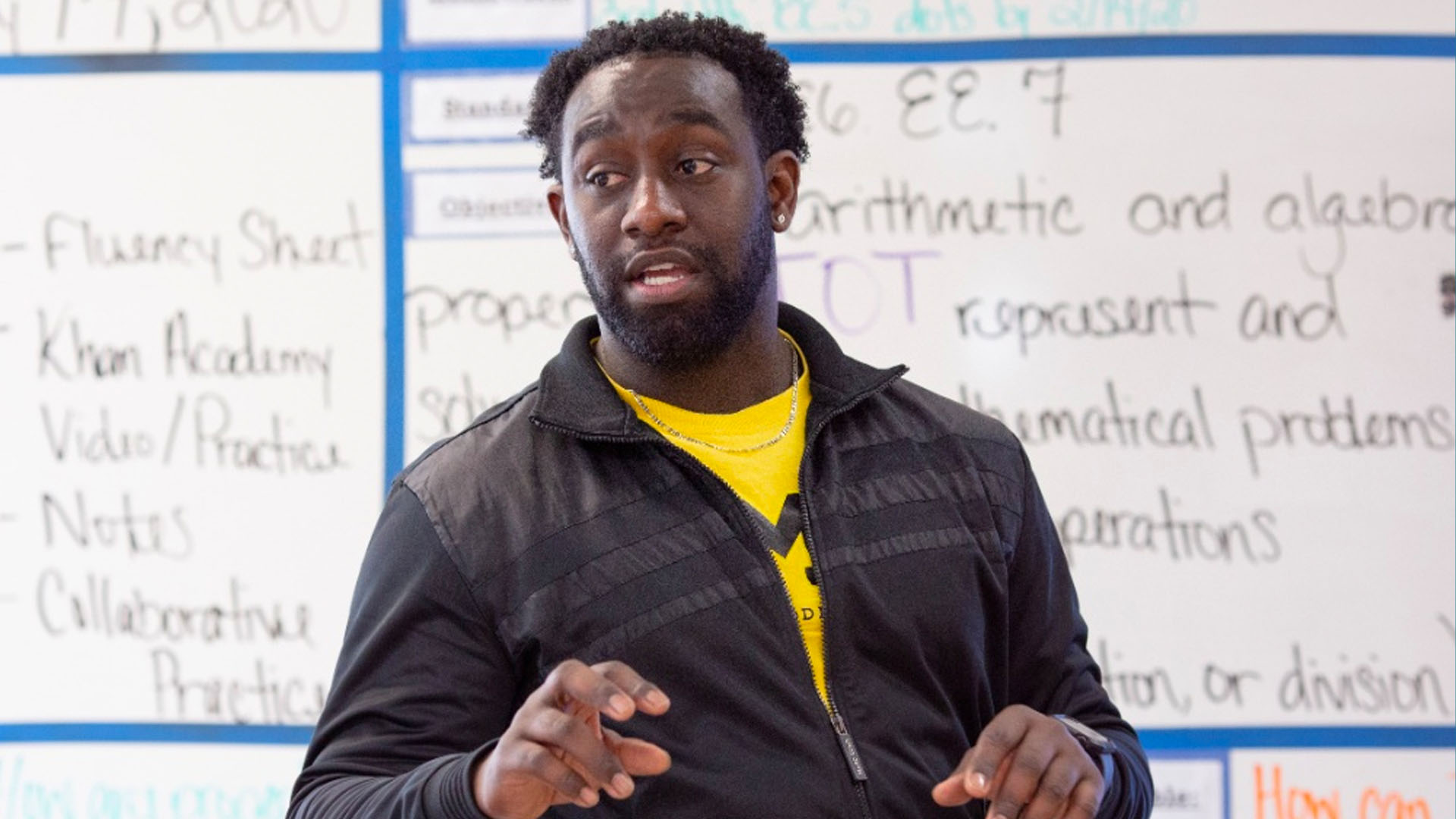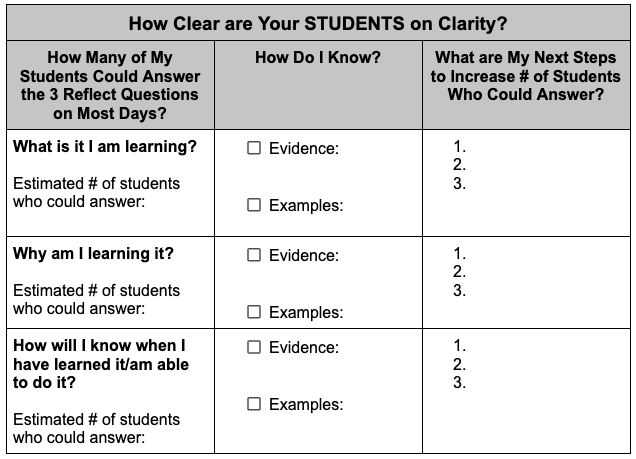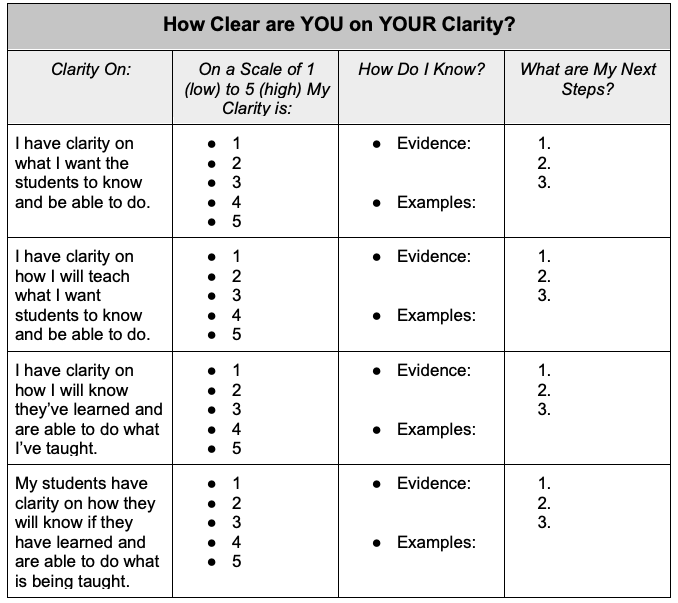“If you don’t know where you are going, you’ll end up someplace else.” – Yogi Berra
Dear Tired Teacher, I see you. You are exhausted. I hear you wondering what to do next for your students through the clutter of things to do. I know you want to do what is best for all your students. Always. I want to help you succeed in your important role as an educator. Let’s get some clarity. Sincerely, A Supportive Peer
Getting Clear on Clarity
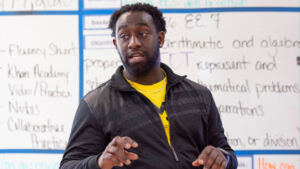
If you could do one thing that both impacts student learning and helps you keep your sanity, would you do it? Of course! So I encourage you to consider making clarity your new focus. Clarity has been linked to increases in the levels of student achievement. “Clarity, then, is the teacher’s ability to present knowledge in a way that students can understand” (Simonds, 2009, p. 279).
Hattie Says Teacher Clarity Is One of the Top Learning Interventions
According to John Hattie, author of the book Visible Learning, a hinge point exists at 0.41 for what he calls the “zone of desired effects”. Simply stated:
- An effect size of 0.40 represents a full school year’s growth over the course of one school year of education.
- An effect size of 0.41 or greater has the ability to lead to more than one full school year’s growth over the course of one school year of education.
- The strategies that fall in the 0.41 or greater effect size are said to be in the “zone of desired effects”.
- Hattie’s Barometer of influence – Infographic – VISIBLE LEARNING

Clarity, with teaching that is purposeful, organized, and intentional has an effect size of…0.75! That is nearly twice the effect size of one year’s growth in one year of education. Think of the impact on closing the learning gap so many of our students are facing post-Covid!
A Math Problem for Us
Knowing what you want your students to learn (priority standards and proficiency scales) + Knowing how you will teach it (instructional tasks, assignments, and resources) + Knowing how you will know they have/have not learned it (summative and formative assessment tasks) = Clarity
To illustrate the idea of clarity, let’s pretend you are the student today. Below (box #1) is your assignment. Note the “I Can” statement before proceeding.

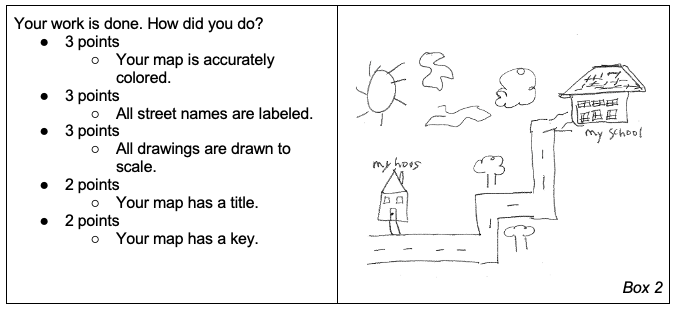
How does this activity make you feel? What is missing? Yep! Clarity.
Clarity doesn’t happen overnight, but it grows with small focused steps.
Student clarity is more than teachers posting and reading student-friendly learning targets/”I Can” statements. It also includes helping students monitor their own learning progress through the use of established success criteria and providing intentional and deliberate feedback. Too often this initial start towards clarity becomes a focus on an outcome or finished work, rather than on student learning. They become a list of what will be done and lack what will be learned and how. Therefore, try the 3 reflections questions for student clarity:
Teacher clarity is multifaceted. Reflect on four areas that support student learning by completing the chart below. Consider selecting one area of focus with a goal for improved clarity. Clarity doesn’t happen overnight, but it grows with small focused steps.
You are working hard, and you are tired; teaching is non-stop and complex. Your main intended outcome has been, and will continue to be, student learning. Your continued drive for clarity on what students are to know, clarity on how to best instruct, and clarity on how you will know if students have/have not learned the material will lead to increased student achievement and the closing of existing learning gaps. It is not too late in the school year to make clarity a focus in your classroom. You’ve got this! Resources:
Resources
Please login or register to claim PGPs.
Alternatively, you may use the PGP Request Form if you prefer to not register an account.


